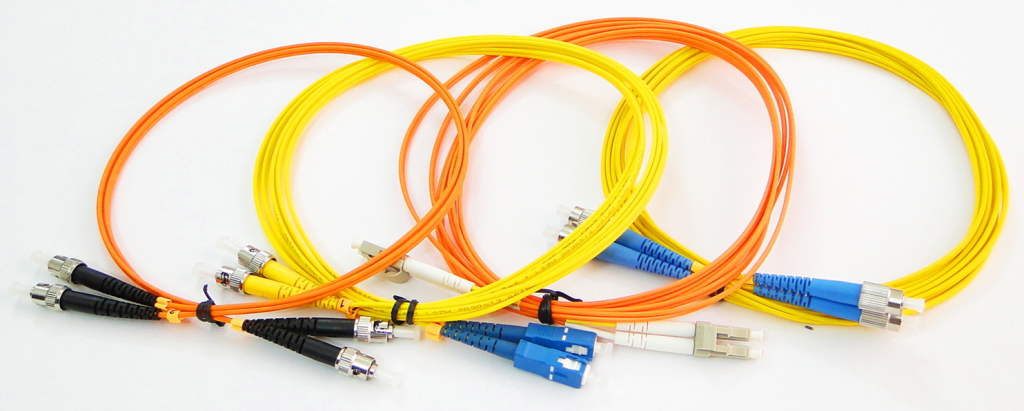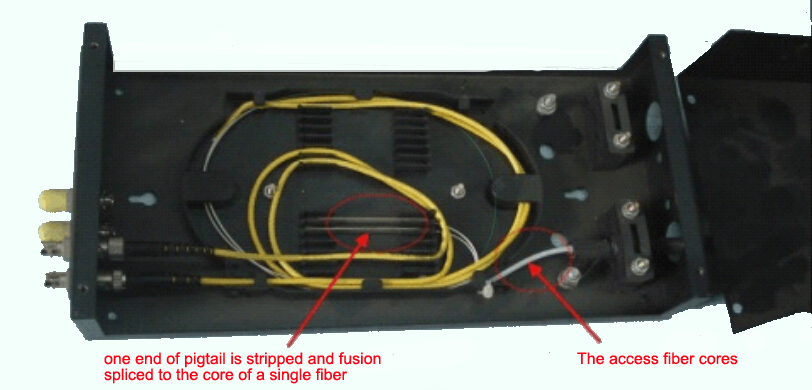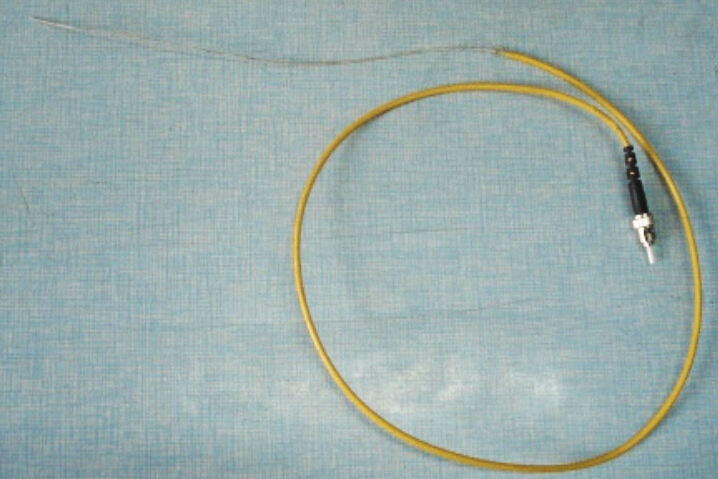In network cabling, outdoors (connections between buildings) generally use fiber optic cables while indoor (inside the building) using Ethernet twisted-pair wires. Then, how to implement the transmission and conversion? During the conversion, which devices will be used? How do they work? And what is the relationship between them? We will make some illustrations to explain these questions in this paper. As shown in the following picture, the related devices and their connections between outdoors and inside the building include fiber optic converter, fiber termination box, fiber cables, fiber patch cord and fiber optic pigtail etc.

connections & functions:
- Let outdoor fiber optic cables access to the termination box that aims to splice the cables and the pigtails and then output through fiber patch cord.
- Connect the fiber patch cord to the fiber optic converter in order to convert the optical signals into electrical signals.
- Go through conversion, fiber optic converter makes electrical signals output. And the transmission medium is twisted-pair wires. Twisted-pair wires here can access to network devices with RJ-45 interface. So far, the conversion of optical signals and electricals has been completed.
Note: Nowadays, there are many new devices with optical interface on themselves that will be more convenient for the connection.
Fiber Termination Box
Fiber termination box (FTB) generally refers to the box shape fiber optic management products used to protect and distribute the optical fiber links in FTTH Networks. The direct application of termination box is to terminate fiber optic cables and connect the core of the cable and pigtail. The inner structure of fiber termination box as following:
As the picture shows, the access fiber cables can be multi-core. For example, a 4-fibers fiber optic cable (namely fiber optic cables with 4 cores), then, after this fiber optic cable accessing to the termination box, it can be splice into 4 pigtails, for 4 fiber patch cords. The picture above shows 2 pigtails, so that they lead to 2 fiber patch cords.
Fiber Pigtail
A fiber pigtail is a single, short, usually tight-buffered, optical fiber that has an optical connector pre-installed on one end and a length of exposed fiber at the other end. One end of the pigtail is stripped and fusion spliced to a single fiber while the other end (with the special connector) connects the fiber optic converter or optical transceiver modules forming an optical data transmission path. When used in the termination box, pigtail connects the fiber cable through the adapter/couplers in the box and then connects to fiber patch cord. The following picture shows a pigtail of a single-mode fiber with ST connector.
Notes: Sometimes, we can’t buy sheer pigtails. We may but the fiber patch cord . In this case, you could have a cut in the middle, stripped its jacket and then into a pigtail.
Fiber Patch Cord
Fiber optic patch cord is also known as fiber optic jumper or fiber optic patch cable. It is composed of a fiber optic cable terminated with different connectors on the ends. For the fiber patch cables, there are two major application areas which are computer work station to outlet and fiber optic patch panels or optical cross connect distribution center. For some experienced engineers, they usually divide fiber patch cord as pigtails.

Fiber Optic Converter
A fiber media converter is a simple networking device that makes it possible to connect two dissimilar media types such as twisted pair with fiber optic cabling. They are important in interconnecting fiber optic cabling-based systems with existing copper-based, structured cabling systems. They are also used in metropolitan area network (MAN) access and data transport services to enterprise customers. Fiber optic converters support many different data communication protocols including Ethernet, Fast Ethernet, Gigabit Ethernet, T1/E1/J1, DS3/E3, as well as multiple cabling types such as coax, twisted pair, multi-mode and single-mode fiber optics.
Conclusion
How to terminate fiber optic cable? Use fiber termination box. How to convert the optical signals into electrical signals? Use fiber optic converter. How to join these devices together? Use fiber patch cord. FS strives to be your loyal helper with a great range of network solutions. Please contact us without hesitation.
Related articles: Fiber Optic Pigtail: What Is It and How to Splice It?



